When cooks compare All-Clad non stick with Scanpan non stick, they’re comparing two very different cookware philosophies:
- All-Clad: The U.S. pioneer of bonded stainless, with non stick as a secondary category (HA1, Essentials, FusionTec). It’s about heritage, professional results, and affordability.
- Scanpan: The Danish innovator of ceramic-titanium coatings, a non stick specialist focused on durability, eco-sustainability, and premium performance.
This guide is built for serious buyers, culinary pros, and searchers looking for long-term cookware.
1. 🏭 Brand Context: Why This Comparison Matters
All-Clad (U.S.)
- Founded: 1971 in Pennsylvania by metallurgist John Ulam.
- Core heritage: Stainless bonded cookware, trusted in U.S. culinary schools and restaurants.
- Non stick offering: Secondary line (HA1, Essentials) → imported, PTFE-based, more affordable.
- Market fit: Buyers loyal to All-Clad stainless who want a complementary non stick skillet or set.
Scanpan (Denmark)
- Founded: 1956 in Ryomgård, Denmark.
- Core heritage: Pioneered ceramic-titanium reinforced non stick coatings (Stratanium, Stratanium+).
- Non stick offering: Entire identity built around durable, eco-friendly non stick cookware.
- Market fit: U.S. cooks willing to pay more for longevity, sustainability, and European design.
📌 Core difference: All-Clad non stick = budget-friendly secondary line. Scanpan = high-performance non stick specialist.
2. ⚙️ Construction & Material Breakdown
All-Clad Non stick Lines
- HA1 (most popular): Hard-anodized aluminum + triple-layer PTFE coating.
- Essentials: Similar to HA1, lighter, stackable design.
- FusionTec: Steel-based ceramic coating, designed to look like enameled cast iron.
Highlights:
- PTFE-based → smoothest release for eggs and delicate foods.
- Non stick performance excellent at first but wears in 2–5 years.
- Made in China (not U.S. like stainless lines).
Scanpan Non stick Lines
- Classic: Aluminum base + ceramic-titanium Stratanium coating.
- Professional: Same as Classic but with stainless handles.
- CS+ / HaptIQ: Stainless exterior, Stratanium+ coating.
- TechnIQ: Co-developed with chefs, deeper pans for professional techniques.
Highlights:
- Stratanium+ = reinforced ceramic-titanium → harder, scratch-resistant, marketed as utensil-safe.
- More durable than PTFE-only coatings.
- Made in Denmark, using 100% recycled aluminum.
🔬 Metallurgy Snapshot
| Factor | All-Clad Non stick (HA1/Essentials) | Scanpan Non stick (Stratanium/+) |
|---|---|---|
| Base Material | Hard-anodized aluminum | Recycled aluminum (stainless exterior in CS+/HaptIQ) |
| Coating Type | PTFE (classic nonstick) | Ceramic-titanium (Stratanium+) |
| Utensil Safe | No | Yes (marketed) |
| Lifespan | 2–5 years | 5–7 years |
| Country of Origin | China | Denmark |
📌 Science difference: PTFE = smoother release, shorter life. Ceramic-titanium = tougher, slightly less slick, longer life.
3. ⚖️ Ergonomics & Handling
All-Clad
- Handles: Grooved, riveted stainless — secure, professional, but polarizing for comfort.
- Weight: Lighter than stainless lines, but solid.
- Balance: Skillet-heavy base, professional feel.
Scanpan
- Handles: Rounded, ergonomic, cooler to touch.
- Weight: Moderate to heavy (CS+ and HaptIQ heavier due to stainless exterior).
- Balance: Centered, more comfort-focused.
📌 Ergonomics difference: All-Clad = pro grip. Scanpan = comfort-first.
4. 🔪 U.S. Cooking Performance Tests
Heat-Up Speed
- All-Clad HA1: Boils 1 qt water ~1:40.
- Scanpan Classic: ~1:30 (lighter aluminum base).
- Scanpan CS+: ~1:50 (stainless-clad, slower).
Heat Distribution
- All-Clad: Even, flat on electric/glass cooktops.
- Scanpan: Excellent, especially CS+/HaptIQ.
Non stick Release
- All-Clad: Ultra-slick → best for eggs, crepes, fish.
- Scanpan: Slightly less slick, but still strong, more browning possible.
Browning & Searing
- All-Clad PTFE: Weak, barrier insulates food from pan.
- Scanpan Stratanium: Better browning — behaves more like stainless + non stick hybrid.
Responsiveness
- All-Clad: Faster adjustments (lighter base).
- Scanpan: Moderate; heavier lines slower to cool down.
📌 Performance summary:
- All-Clad = smoother release, weaker browning.
- Scanpan = stronger browning, more durable surface.
5. 🧼 Cleaning & Durability
All-Clad Non stick
- Hand wash strongly recommended.
- Dishwasher safe (but shortens lifespan).
- PTFE wears in 2–5 years.
- Warranty: Lifetime, but coating wear considered normal (not covered).
Scanpan Non stick
- Hand wash recommended, dishwasher safe.
- 5–7 year realistic lifespan.
- Utensil safe (though best to avoid metal long-term).
- Warranty: Lifetime, same coating caveats as All-Clad.
📌 Durability edge = Scanpan.
6. 💵 U.S. Pricing (2024)
| Item / Set | All-Clad Non stick (HA1/Essentials) | Scanpan Non stick (Classic/CS+/HaptIQ) |
|---|---|---|
| 10” Fry Pan | $50–$70 | $80–$120 |
| 3 qt Saucepan | $100–$130 | $160–$200 |
| 10 pc Set | $399–$699 | $699–$999 |
📌 All-Clad non stick is budget-friendly. Scanpan is luxury-priced non stick.
7. 📉 Longevity & Value
- All-Clad HA1: $500 set, lasts ~3 years → ~$165/year.
- Scanpan CS+: $800 set, lasts ~6 years → ~$133/year.
📌 Over time, Scanpan delivers more value despite higher upfront cost.
8. 👨🍳 Buyer Profiles
- All-Clad Non stick is for you if:
- You want affordable non stick from a trusted U.S. brand.
- You prioritize smooth release for delicate cooking.
- You already own All-Clad stainless and just want a couple of non stick skillets.
- Scanpan is for you if:
- You want longer-lasting non stick (5–7 years vs 2–5).
- You value eco-friendly recycled aluminum.
- You want more browning and durability.
- You’re okay paying premium pricing.
9. 📊 Comparison Table: All-Clad vs Scanpan Non stick
| Feature | All-Clad Non stick (HA1/Essentials) | Scanpan Non stick (Stratanium/+) |
|---|---|---|
| Origin | China | Denmark |
| Base Material | Hard-anodized aluminum | Recycled aluminum (stainless in premium lines) |
| Coating | PTFE triple-layer | Ceramic-titanium Stratanium+ |
| Release Performance | Ultra-smooth | Very good, slightly less slick |
| Browning Ability | Weak | Stronger |
| Lifespan | 2–5 years | 5–7 years |
| Utensil Safety | Wood/silicone only | Marketed as metal safe |
| Price (10 pc set) | $399–$699 | $699–$999 |
| Buyer Type | Budget-friendly, All-Clad loyalists | Premium non stick buyers |
✅ Final Verdict: All-Clad vs Scanpan Non stick
- All-Clad non stick = affordable, smooth-release pans, ideal for eggs, pancakes, and delicate foods. Best as a secondary set alongside stainless steel.
- Scanpan nonstick = premium, more durable pans with better browning and longer lifespan. Best if you want nonstick as your primary cookware.
📌 For short-term affordability → All-Clad HA1.
📌 For long-term durability and premium use → Scanpan Stratanium+.
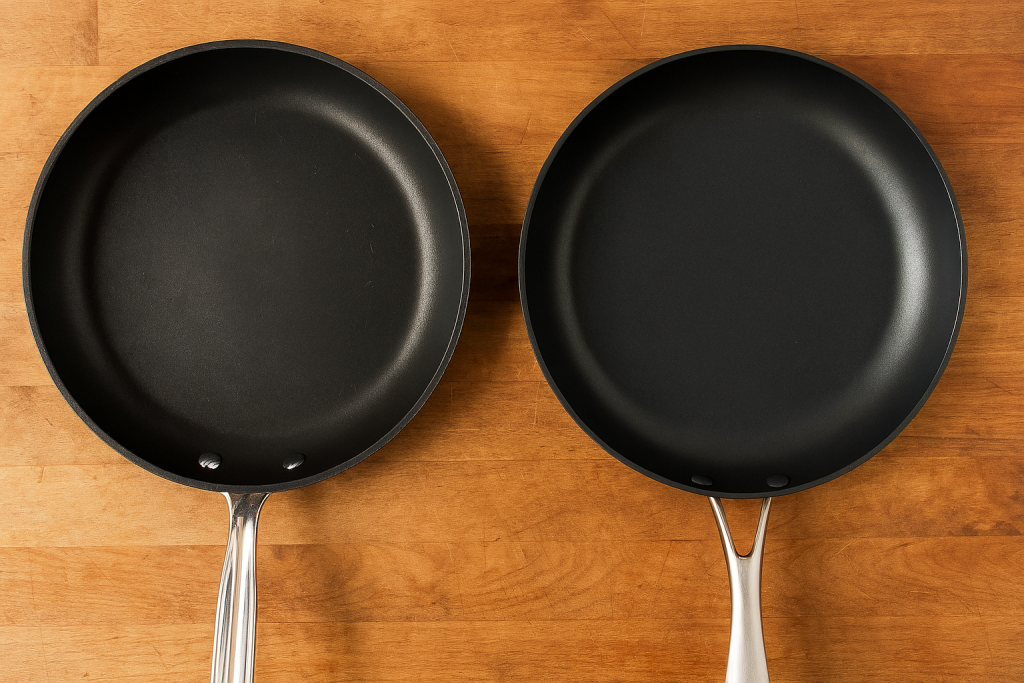

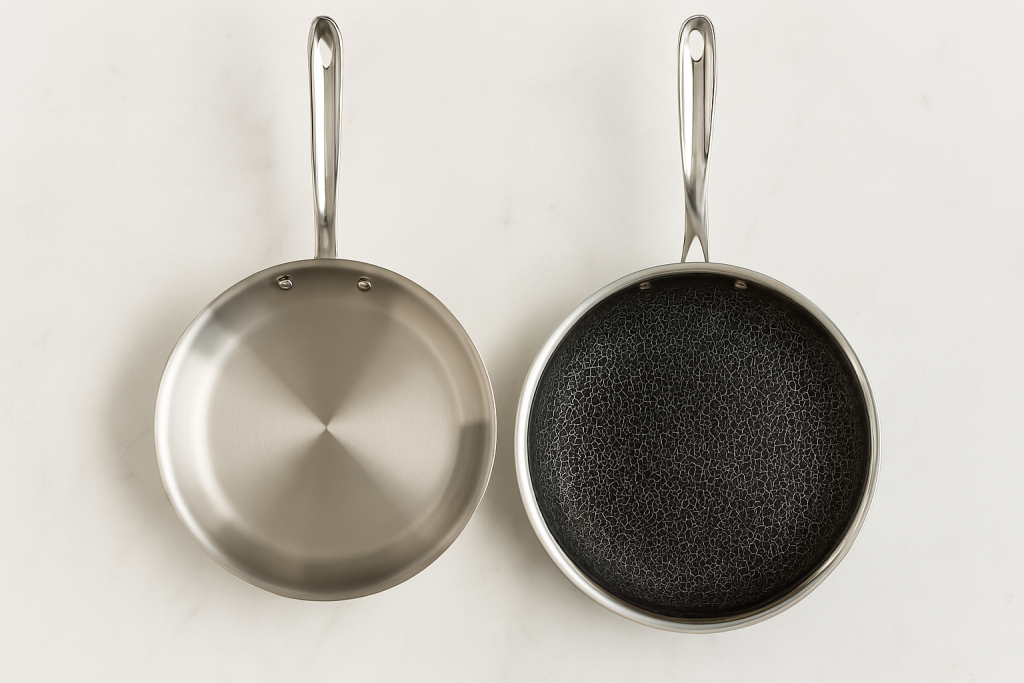
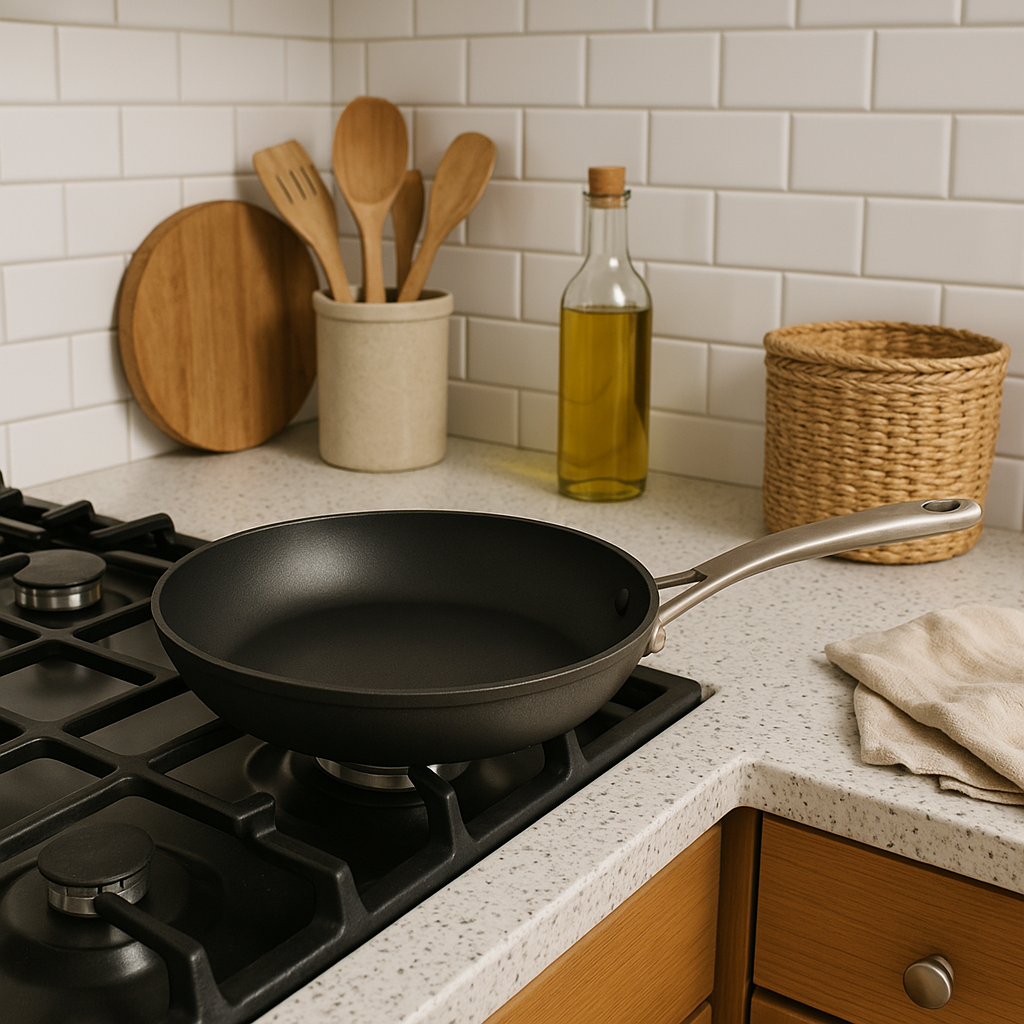
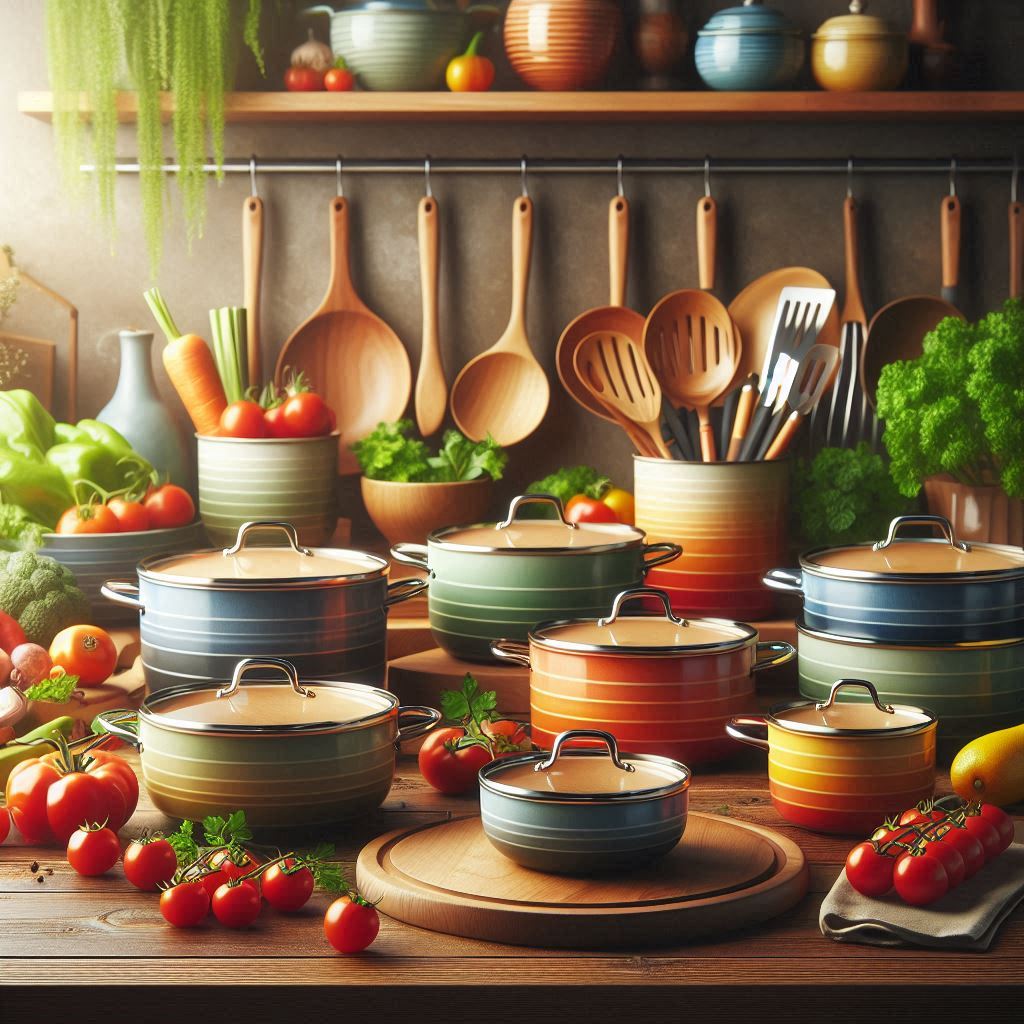
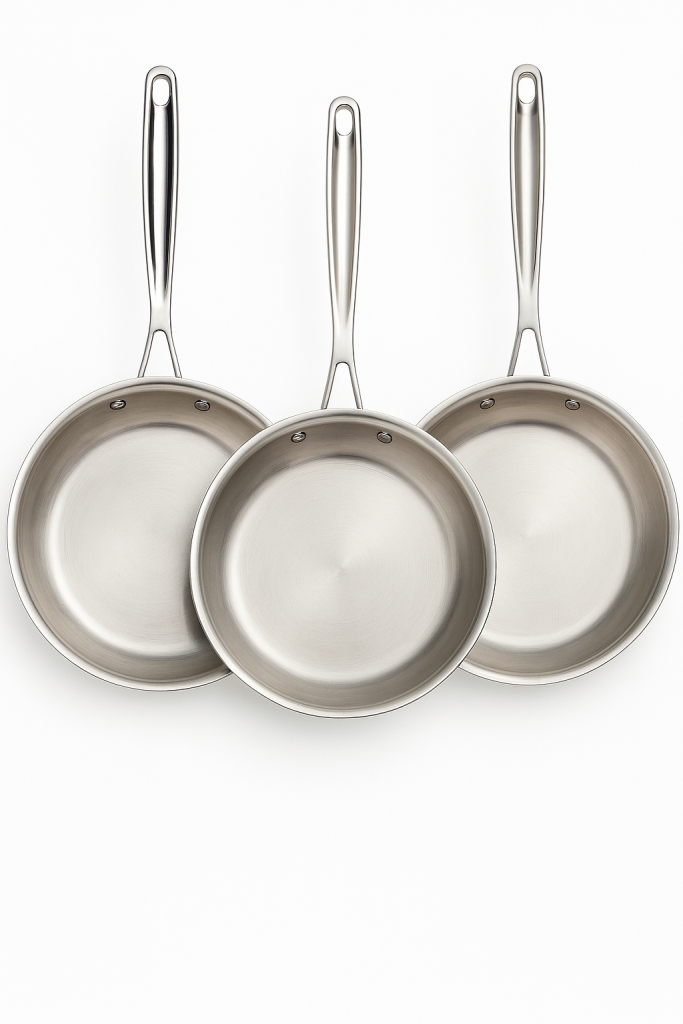
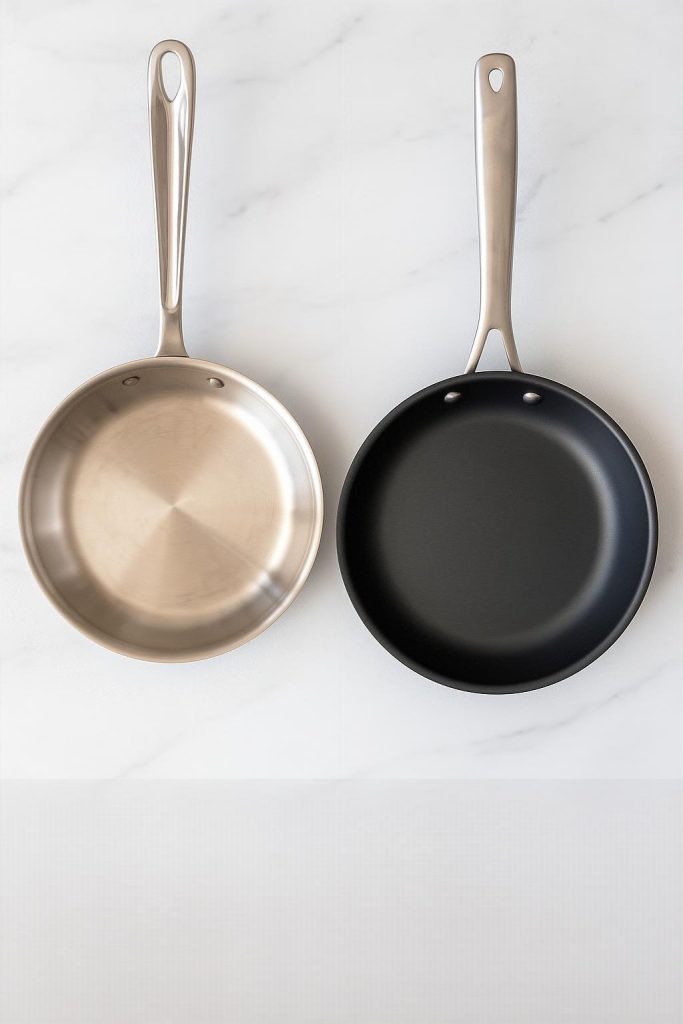

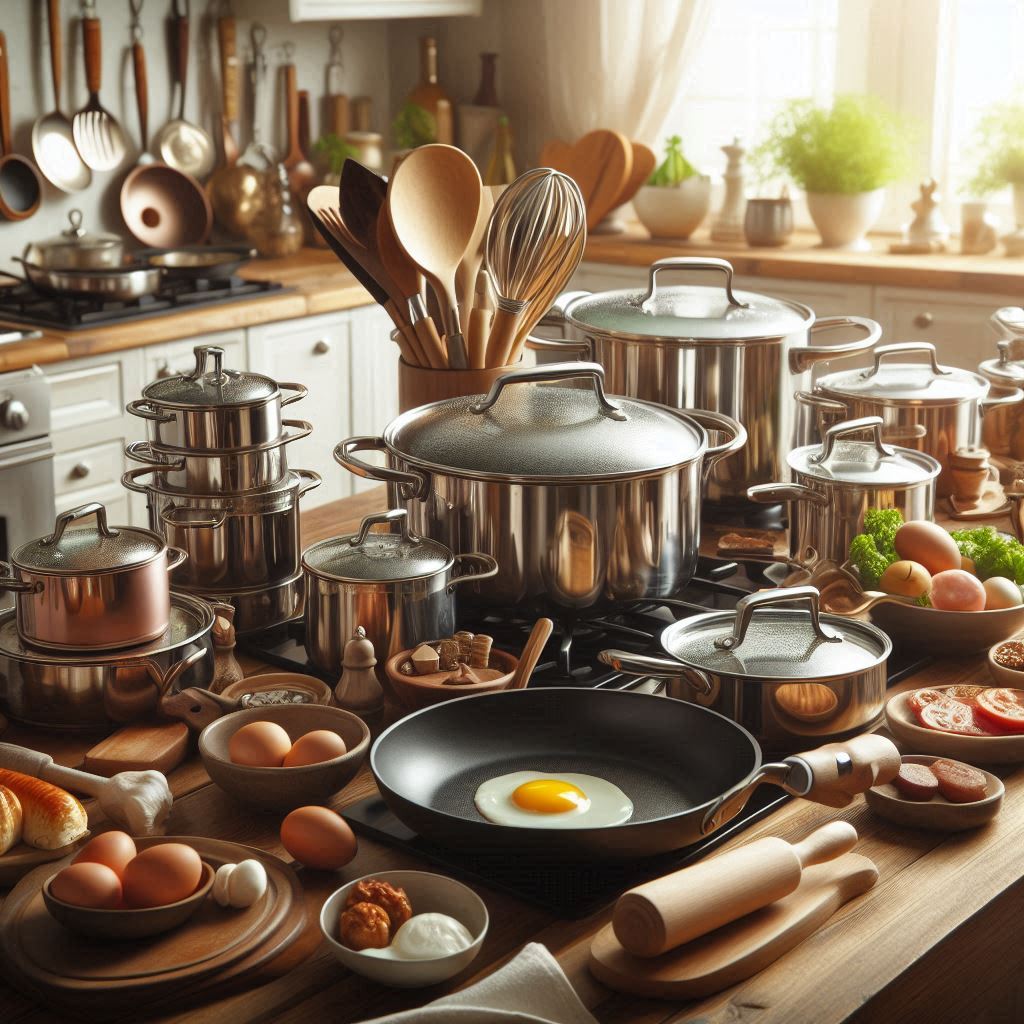
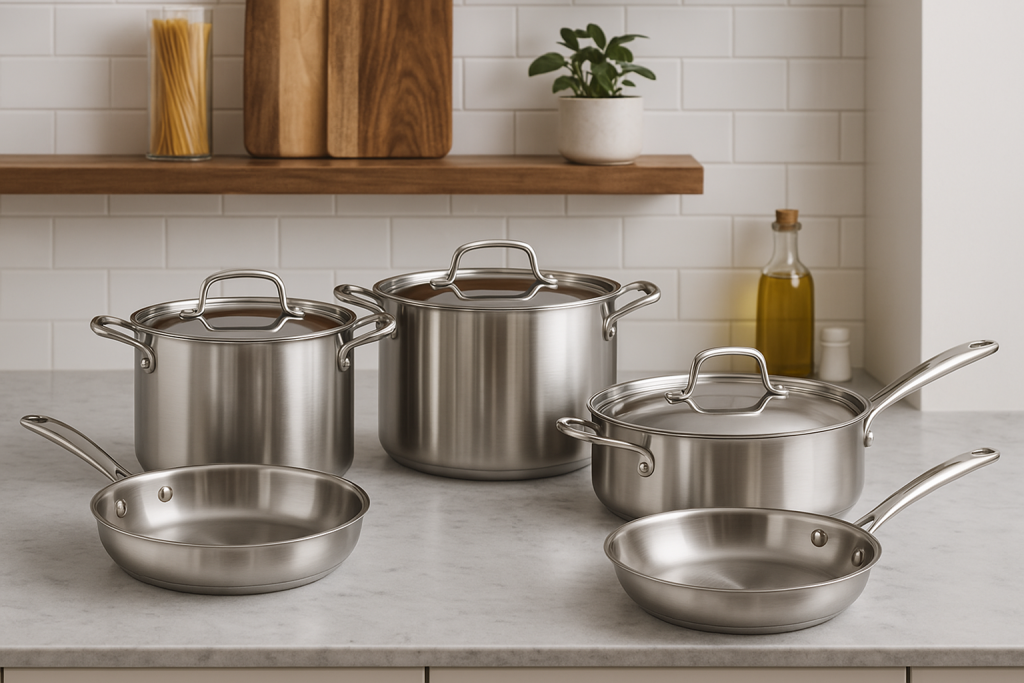
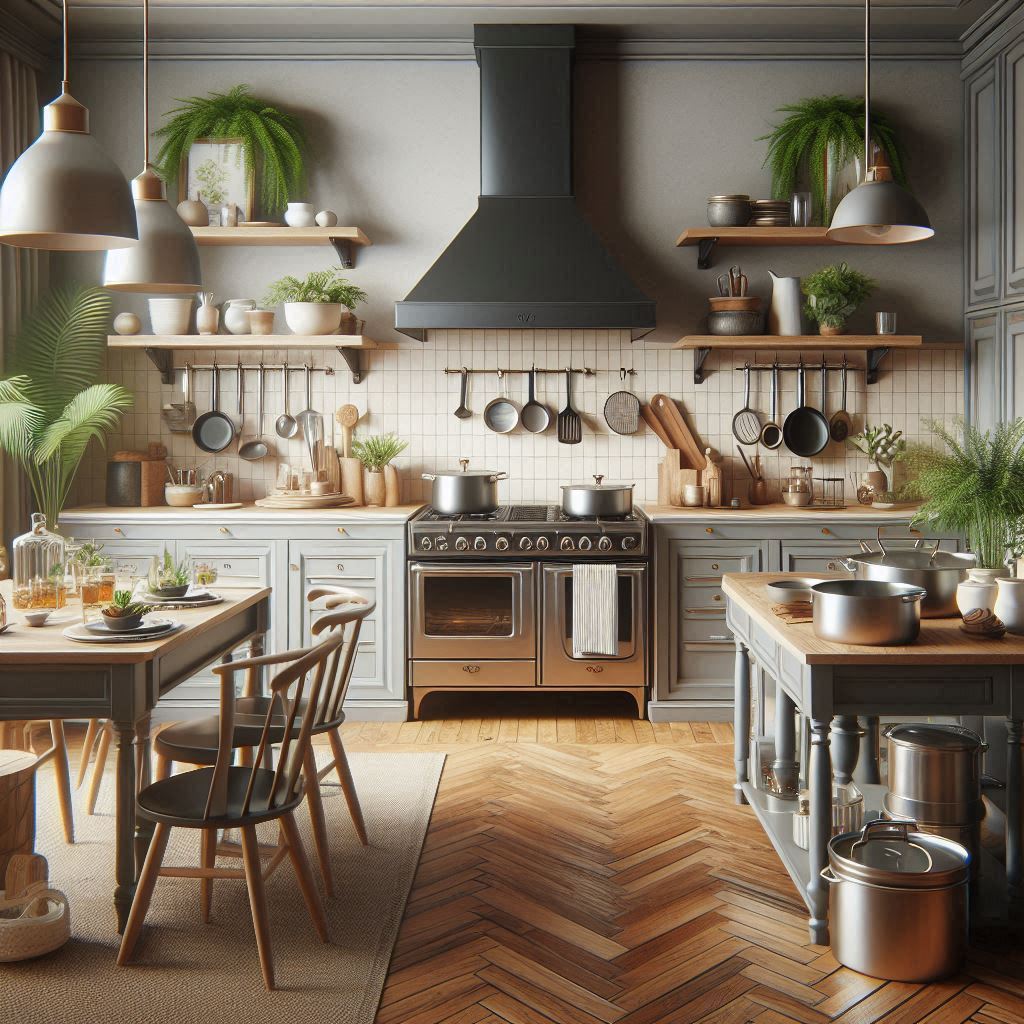
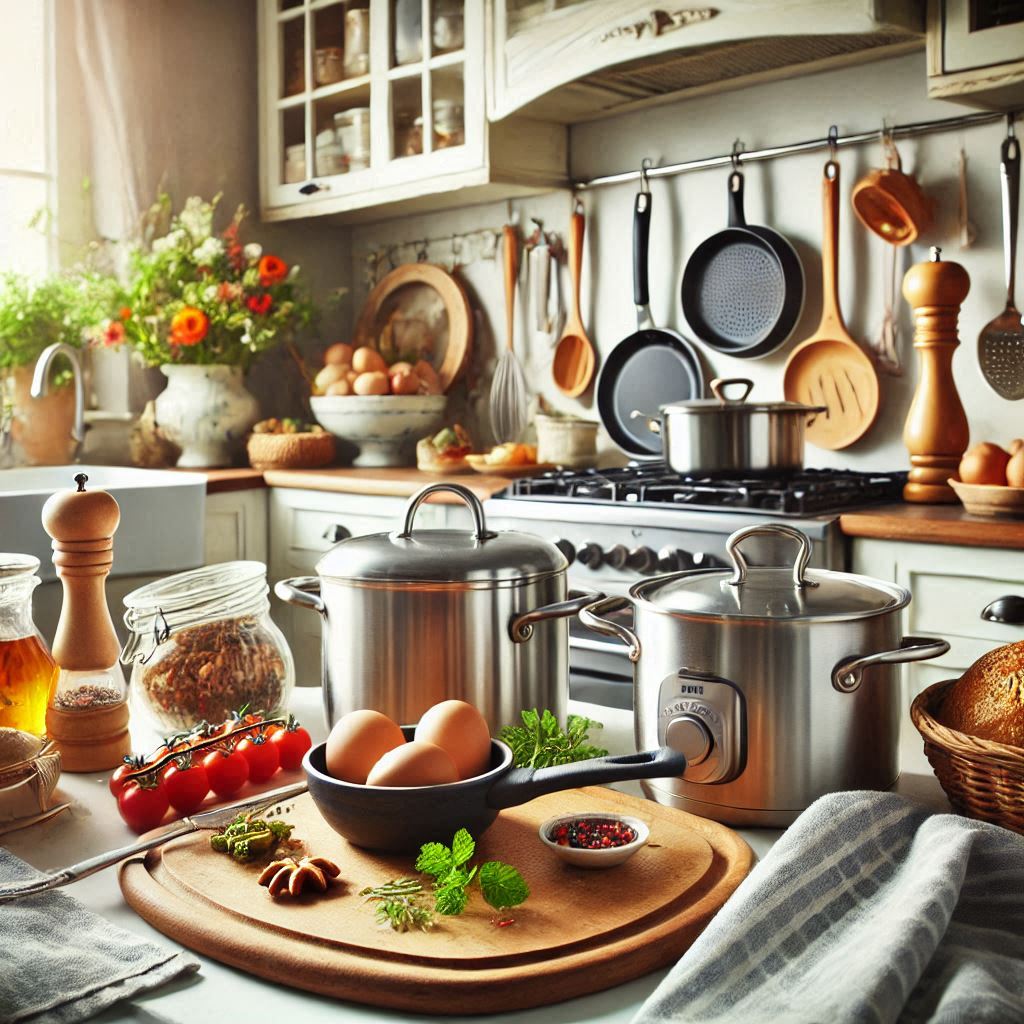
Leave a Reply